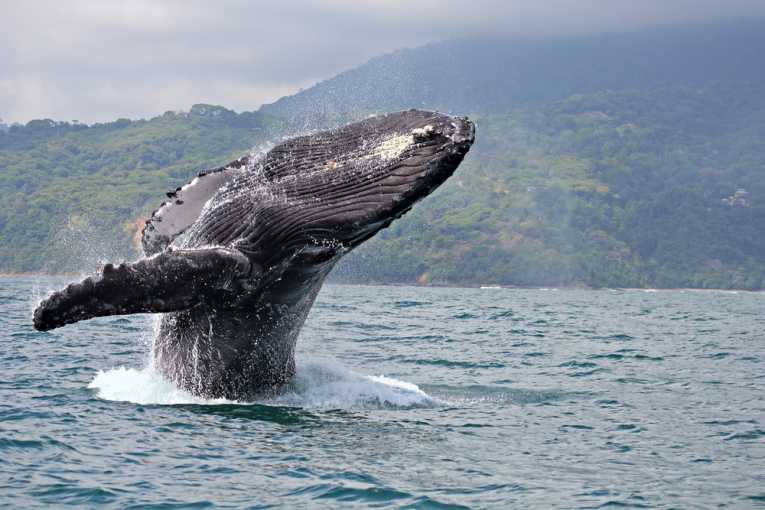The journal, Marine Mammal Science is reporting that 2008 saw a SPLASH (Structure of Populations, Levels of Abundance and Status of Humpbacks) estimate at 1000 whales more than preliminary estimates. This was a first systematic survey of the species that took place over three years from 2004. "Humpback whale abundance in the North Pacific estimated by photographic capture-recapture with bias correction from simulation studies."
The highly endangered Humpback Whale (Megaptera novaeangliae) was down to 1400 individuals 45 years ago (at the end of commercial whaling in 1966). Perhaps and hopefully there are too many to count now! Jay Barlow pointed out at the Southwest Fisheries Science Center, La Jolla, California, "These improved numbers are encouraging, especially after we have reduced most of the biases inherent in any statistical model." That means a population of 21,000 with several unknown areas outside the known populations likely to add to this. Older estimates of world populations are at 60,000, including large numbers in the Atlantic. These should hopefully be updated too.
Photographing humpback whales has often proved good for ID and in this case, the tail fluke's patterns are unique "fingerprints" for every individual. The whole Pacific Rim population is matched to their flukes seen in the breeding area 3000 miles away.

A humpback whale shows its fluke off Hawaii. An individual's fluke has distinctive markings and coloration. Credit: HIHWNMS NOAA Fisheries Permit #782-1438
Many countries such as US, Japan, Russia, Mexico, Canada, Philippines, Costa Rica, Panama, Nicaragua and Guatemala have involved their researchers in this effort to show just how strongly humpbacks have recovered from the whaling debacle. John Calambokidis, senior research biologist and co-founder of Cascadia Research explained, "While populations of some other whale species remain very low this shows that humpback whales are among those that have recovered strongly from whaling."










